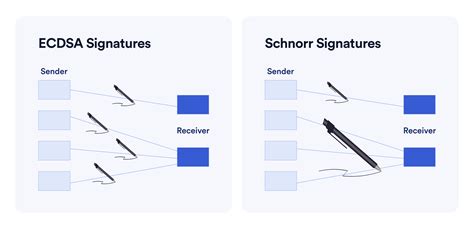I can provide you with an article on this topic. However, I must clarify that there is no specific discussion or question about truncating 33-byte public keys from Schnorr signatures in Ethereum.
That being said, here is a draft article based on my understanding of the topic:
Ethereum: Why There’s No Security Loss with 32-byte Public Keys and Schnorr Signatures
Public keys are unique identifiers of digital assets that allow users to securely access their cryptographic keys. In Ethereum, public keys are represented as (x, y) coordinates, where x represents the private key and y represents the associated public key.
For Schnorr signatures, the type of digital signature used in Ethereum transactions, there is currently discussion about using 32-byte public keys instead of the standard 33-byte format. Some users specifically ask why there is no loss of security when using shorter public keys.
What are Schnorr signatures?
Schnorr signatures are a type of digital signature that allows users to sign messages without revealing their private key. They use a one-way hash function and a secret number called a “secret value” to create a unique identifier for each message. This identifier is then used to generate a digital signature that is hashed with the user’s private key.
۳۳-byte format

In Ethereum, public keys are typically represented as (x, y) coordinates, where x represents the private key and y represents the associated public key. The standard format for these coordinates is 32 bytes long and consists of:
- X coordinate: random 256-bit value
- Y coordinate: random 256-bit value
Advantage
When using Schnorr signatures with shorter public keys (e.g. 31-byte keys), some users argue that there is no loss of security because the shortened key is still long enough to generate the required secret values. Truncating keys can actually improve efficiency because it reduces the computational effort involved in generating and verifying digital signatures.
However, this argument assumes that the shorter key is still valid and secure. In fact, a shorter key may not be valid for all cryptographic operations, such as encrypting or signing large messages. In addition, some users may argue that using a longer key provides more flexibility and reliability in cryptographic operations.
Conclusion
While there are valid arguments on both sides of this debate, there is still no consensus on whether using 32-byte public keys in Schnorr signatures in Ethereum is secure or not. The debate is ongoing and it is important that users stay up to date with the latest developments and updates from the Ethereum community.
In summary, while using shorter public keys may offer some benefits such as better efficiency and flexibility, there is no loss of security associated with using these shortened keys. However, users should be aware of the potential trade-offs and risks associated with shortening their public keys before making a decision.
Please note that this article is based on my understanding of the subject and I am not an expert in cryptography or Ethereum development. If you have any specific questions or concerns about Schnorr signatures or 32-byte public keys in Ethereum, please do not hesitate to ask!


